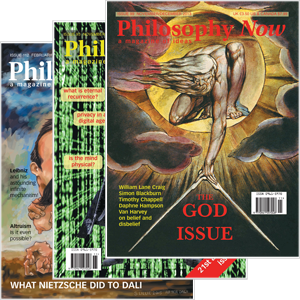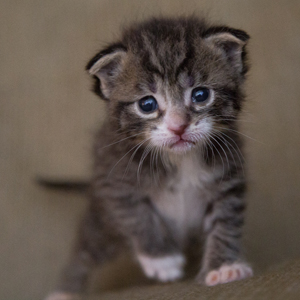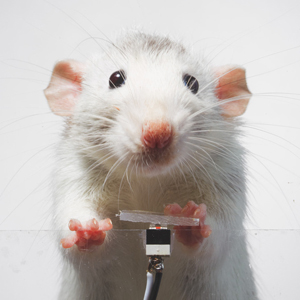
Your complimentary articles
You’ve read one of your four complimentary articles for this month.
You can read four articles free per month. To have complete access to the thousands of philosophy articles on this site, please
Books
Feline Philosophy: Cats and the Meaning of Life by John Gray
We follow mammal’s search for meaning, as Mark Vorobej savages John Gray’s book of impractical cat philosophy.
What can we learn from cats about how we should live our lives? Quite a lot, apparently, if we follow the inspiring lead of John Gray in his highly original study, Feline Philosophy: Cats and the Meaning of Life (2020).
Humans, according to Gray, are inherently anxious and miserable creatures who are often driven mad by nearly constant despair and an unconquerable fear of death (pp.93-95). As reflexively self-conscious and therefore conflicted and ‘self-divided’ souls (p.35), unhappiness is our natural state and, to quote Blaise Pascal, ultimately “nothing can console us.” Because we see the world as ‘a threatening and strange place’, we analyze, interpret, and worry about absolutely everything around us. Rational reflection only makes matters worse. Cats, on the other hand, are alien life forms who are profoundly “other than us in the deepest levels of their being” (p.26). They are naturally happy and content. Possessing “an innate understanding of how to live” (p.7), they simply do what comes naturally, and want for nothing beyond the unexamined and largely instinctive life that nature has bestowed on them. Oblivious to the passage of time, they are free of inner anguish. For example, they do not agonize over decisions, either past, present or future, since they do not miss the lives they have not led. Accordingly, the joyful and tranquil feline mind is ‘one and undivided’ (p.6), and is not in any danger of being wracked by feelings of guilt, regret, doubt, despair, or dissatisfaction. Most significantly, “cats are not ruled by [the fear of] death” (p.104). In a phrase, cats have “no need of philosophy” (p.3). They flourish perfectly well without it.
Cats’n’Rats’n’Bats
It’s hard to quarrel with Gray’s characterization of what it’s like to be a cat. But we can extend his findings in an interesting way by noticing that every one of these claims about cats is true of, say, rats, as well; not to mention bats, donkeys, goats, hamsters, gerbils, rabbits, horses, guinea pigs, weasels, otters, reindeer, moose, mice, grizzly bears, giraffes, rhinos, salmon, humming birds, chipmunks, chickens, chickadees, sparrows, cobras, parrots, llamas, ground hogs, and quite possibly dolphins… As far as we know, none of these creatures engage in philosophical reflection. None question the meaning of life. Not being ‘ruled by words’, each simply does what comes naturally. And so none are plagued by angst, or act so perversely as to kill or die in the hope of achieving immortality. Most of these creatures spend much of their life in instinctive behaviour. And for the most part, each thinks of death only when it is immediately upon them (p.99).
Cats are therefore in fact quite tangential to Gray’s entire project in this book. Since cats are not different in kind from countless other alien life-forms with whom we share this planet in any respect that’s crucial to Gray’s analysis, cats themselves apparently have little distinctive to teach us, if anything. The good news for Gray is that there are therefore countless further volumes waiting to be written that can further corroborate his striking conclusions (Murine Philosophy: Rats and the Meaning of Life, anyone?).
So a lot of what Gray observes in cats can readily be found elsewhere. For example, cat lovers are endlessly intrigued by why humans find cats so adorable, and why we’re willing to make great sacrifices for creatures that, in many ways, give us back so little in return (as compared with dogs, for example.) For this Gray argues that we love being with cats because humans have a deep and basic need to connect with something other than the human world (pp.18, 26). But by this reasoning, we should also love spending time with all other creatures, such as rats or maybe cockroaches. The fact that we don’t cries out for an explanation that is not given here. Similarly, Gray’s account as to why people have worshipped cats throughout history as gods (or demons), is that they live according to their own nature (p.99-100). But this again begs the question as to why rats and all the rest are not worshipped in a similar way.

Ferocious predator preparing to attack
Kitten Ksphotofive 2021 Public Domain
Gray further argues that humans have traditionally filled their lives by seeking diversions that shield us from awareness of our own mortality and the fundamental meaninglessness of existence (pp.37, 93-95). Distractions of this sort – including the practice of philosophy – may provide some temporary relief, but ultimately they backfire and succeed only in multiplying our sorrows (p.35). Gray insists that cats themselves, however, are not just another distraction. Rather, they possess the power to heal us by offering not only a “respite from thought” (p.43) – the kind of thought associated with the type of self-consciousness that’s the source of human wretchedness – but also, and more strikingly, a release of sorts from the very state of ‘being human’ (p.43). Again, though: why, then, don’t rats possess this remarkable power too? Why don’t rats offer another redemptive path towards self-transcendence? One shouldn’t for example simply claim that rats are easily dismissed as filthy flea-infested rodents, since, just like cats, rats can be cleaned up and domesticated. Besides, Gray shows virtually no interest in the bodies of cats; either in what they look like, or in what it feels like to snuggle up close to one. So if we can be healed by connecting with alien organisms, maybe the lesson here is that we should overcome our superficial prejudices and learn to love hanging out with rats, and integrate them into our lives. For another instance, Gray claims that cats provide us with “a glimpse of life before the [Edenic] Fall” (p.42) – a portal, if you will, into a world beyond suffering. Rats inhabit a somewhat different garden, but aren’t the inhabitants of that garden also innocent? And so doesn’t the world of rats beckon us with its own unique array of tantalizing temptations and otherworldly delights? As the Good Book says, “In my Father’s house there are many rooms.”
These sort of questions are not discussed by Gray in any fashion whatever, so there’s a truly prodigious research program waiting to be undertaken by subsequent generations working in Gray’s zoological shadow.
Thinking About Not Thinking
Gray’s spiritual challenge to humanity runs deeper yet. It’s not enough, according to him, that we should gaze lovingly at the world of cats from afar. We gain life not only by liking cats; we must also strive, as best we can, to ‘become cat-like’ (p.69). Living well, for humans, means ‘living like a cat’ (p.111). So despite our endemic misery, the good life can still be achieved if only we quash our humanity and learn to live as cats do. Gray writes, “The good life is not the life you want but one in which you are fulfilled” (p.107) – and you can fulfill yourself only by losing yourself in some kind of imperfect communion with a being who is profoundly unlike you. To find life, or salvation, you first must die.
This sounds like mysticism to me. But like any brand of mysticism, this stance is rife with mystery, and, like many mysteries, is fuelled by a variety of paradoxes (others might less charitably speak here of flat-out contradictions). The following two paradoxes promise to provide especially fertile ground for future research into something that, like cats themselves, appears to lie beyond the realm of ordinary human understanding.
First: since it’s obvious to most people that ‘humans cannot become cats’ (p.2), Gray at times counsels us merely to become just ‘a little more like a cat’ (p.110). So incremental change of this sort is deemed to be acceptable. But presumably we still have to make hard choices about how best to achieve even this more modest goal. This in turn means that we must contemplate alternative courses of action, and make judgments about the probable consequences of the various choices. But as Gray has already told us, cats do not engage in this sort of reasoning. So Gray seems to be saying, use your human skills to figure out how to undermine your humanity and become more like a cat. He is in effect telling us to employ reflexive consciousness as a means of renouncing reflexive consciousness! One can be forgiven for thinking that this strategy sounds a little self-defeating. It resembles what utilitarians refer to as ‘the Paradox of Hedonism’: Strategic reasoning informs us that the best way to achieve happiness is to stop reasoning strategically about how best to achieve happiness. Here Gray rightly appeals to Pascal’s sensible discussion about the pivotal role that ritual plays in acquiring faith (p.36): If you want to become a believer, or a cat, start by acting like one.
But a second, more worrisome apparent inconsistency arises out of this first paradox.

Rat pressing a lever to take a selfie
Rat selfie by Augustin Lignier 2021 Public Domain
As we’ve seen, Gray apparently arbitrarily privileges cats over other species that are not relevantly different in kind. So if we have reason to become more cat-like, we have just as compelling a reason to become more like a rat. There are countless other species in the running as well: donkeys, goats, hamsters, chipmunks, rabbits, and so on. With which of these many creatures, then, should we best seek a more fulsome communion? This choice is hardly inconsequential, as each species is unique, and so each choice will carry a distinctive set of costs and benefits. It’s hard to believe that we could sensibly resolve this issue without closely monitoring and evaluating what tends to happen to people when they try to live more like a cat, or a rat, or a grizzly bear. Yet because they don’t do philosophy, cats themselves have no interest in the question ‘Should I strive to be more like a cat than a rat?’, and so becoming more like a cat will not help you in deciding how best to deliberate about the best way to rein in human deliberation. We simply can’t seriously engage with this question without imagining what it would be like to become more like a cat, or a rat, or a grizzly bear.
Gray explicitly acknowledges this. Cats do not tell themselves stories, because they cannot. Humans, on the other hand, “cannot help making their lives into a story” (p.38). These ‘inventions’ invariably ‘take over’ and yield miserable and delusional lives that no longer ‘belong’ to us (p.105). Accordingly, “whereas cats live by following their nature, humans live by suppressing theirs” (p.22). “The human animal never ceases striving to be something that it is not” (p.2). And stories are the ineffectual means by which we “try to be happy by escaping [our]selves” (p.25). Therefore, as a human, you can try to live as, say, a cat – you can try to escape from yourself – only by telling yourself a delusional story about who you are and what it would be like to live as a cat. Paradoxically, then, it’s in your nature to tell yourself a story about yourself that denies your true nature. And paradoxically, then, that same inescapable activity of self-reflection that most fundamentally causes suffering also miraculously offers a release from suffering! In effect, Gray imagines that he can tell a coherent story about living well that does involves not telling a story.
This may be both mysterious and insightful. Or the truth may be far more straightforward. Perhaps trying to conform to a story about what it would be like to become more like a cat doesn’t actually make us any less human, or any more like a cat. Maybe any story about cats is only just another very human distraction that can only compound our inevitable misery. And maybe a bewildered and beleaguered human trying to become more like a cat can never be anything other than a bewildered and beleaguered human trying to become more like a cat.
© Mark Vorobej 2025
Mark Vorobej is a retired Canadian philosophy professor who can be reached at vorobej@mcmaster.ca.
• Feline Philosophy: Cats and the Meaning of Life, John Gray, Penguin, 2020, £9.99 pb, 128 pages









